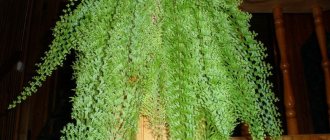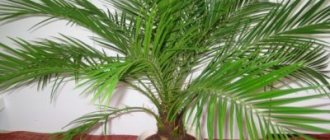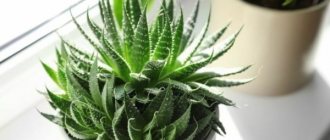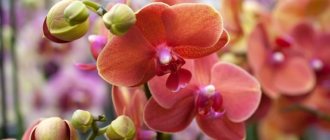The prickly pear cactus (lat. Opuntia) belongs to the largest genus in the Cactus family. It grows on both American continents and islands located in the Caribbean. Some species of prickly pear have over time colonized most tropical and subtropical areas. The largest number of species of this plant is in Mexico; prickly pear can even be seen on the country’s coat of arms.
Botanical description
Fig prickly pear (Opuntia ficus-indica) has articulated stems and shoots that are cylindrical, spherical or flattened. The bushes grow to a height of 4 m, and their diameter is 2 m.
The plant is completely covered with thorns, large and hard thorns . The cactus blooms spectacularly, as it can have red, yellow, yellow-orange flowers. As soon as they wither, large egg-shaped fruits are formed, which are called “prickly pears.” Inside they contain flat seeds with a hard skin. The fruits are also covered with blind tufts, the tips are curved, which can only be seen under a microscope.
The roots of these cacti are powerful, they develop more in width than in depth. You can identify fig prickly pear by the shade of the fruit pulp. It can be white or bright red. Popularly, this plant has received several names:
- mother-in-law's tongue;
- eared cactus;
- dragon fruit;
- fig cactus.
Classification and description of the Indian prickly pear cactus
Plant classification
Scientific name: Opuntia ficus-indica Synonyms: Cactus decumanus, Opuntia albicarpa, Opuntia amyclaea, Opuntia cordobensis, Opuntia decumana, Opuntia ficus-barbarica, Opuntia ficus-indica var. gymnocarpa, Opuntia gymnocarpa, Opuntia hispanica, Opuntia joconostle, Opuntia maxima, Opuntia megacantha, Opuntia paraguayensis Common name: Indian prickly pear Family: Cactaceae (Cactaceae) Subfamily: Opuntioideae Genus: Opuntia (Opuntia)
Because Opuntia ficus-indica has been cultivated and widely distributed for centuries, it is unknown where exactly it came from, but it is especially abundant in south-central Mexico and this may be its homeland. Many people know that Prickly Pear is the most common xerophytic succulent plant and the most commercially important cactus, which has long been used and continues to be widely used as a fruit and fodder crop. On the Internet you can find different names for this cactus - in Mexico it is called Tuna (like its fruits), also called Cactus Pear, Indian Fig, Nopal, Barbary Fig, in other countries - Indian Fig, Indian Fig, Prickly Pear, etc.
Photo of natural cactus Opuntia indica in Mexico
Indian prickly pear is a slow-growing segmented cactus (some varieties are tree-like) up to 5–7 m high. The root system is superficial and spreading. The crown in favorable conditions reaches more than 3 m in diameter. With age, natural Opuntia develops a trunk up to 1 m in diameter. The base of the old plant becomes woody, but the cactus grows in all directions and the branches often hang low. Visually, Prickly Pear is a shrubby mass of green “pads”, each of which has a flat oval shape. These pads are often mistaken for leaves because of their green color and appearance, but they are actually stem segments.
Photo of a cultivated cactus without needles
Branches (or cladodes) are 20–60 cm long and 10–40 cm wide. The color of the branches is gray to gray-green. The cladodes that produce flowers and new branches are always bright green. Young segments curve upward. The epidermis of the branches is thick and waxy. Young cladodes form several spines (up to 2.5 cm in length); after a while they fall off. The spines on Opuntias come in two types: large needles and tiny, spiny, easily detachable spines called glochids. Some prickly pears are called "spineless" (without large spines), but glochids are present.
The Prickly Pear variety "Indian Fig" blooms in the spring but may produce a few flowers later. Flowers are formed on 1-2 year old branches, located along the perimeter of the cladodes, yellow or orange, cup-shaped, up to 7 cm long.
The base of the flower looks like a small green barrel with slightly raised areoles, which produce glochids (small spines) and sometimes longer needles. Once the flower has dried, its base enlarges over the following months until it ripens in the fall, at which point it becomes colored. The fruit of the cactus is an oblong berry, 5-10 cm long and 4-9 cm wide, green when ripe. The ripe berry turns yellow, orange, red or purple (depending on the variety), covered with clusters of small spines. The number of viable seeds in the fruit varies from 170 to 350.
The culinary value of this plant is not limited to its fruits; its tender young stems in the form of cushions are used as a vegetable, called “nopales” in its homeland.
Because Indian Figs have been cultivated for thousands of years, over time people have chosen less spiny forms to grow, so cacti without large spines are more common. But you should still remember about glochidea. They are not dangerous, but they certainly irritate the skin and are difficult to get rid of.
Differences from other species
The main advantage of this plant is its absolute endurance . Opuntia fig can grow in a variety of conditions, even after the stems have withered and without prolonged watering. The cactus blooms beautifully in its natural environment, so at home the flowering will be more luxuriant and longer.
In addition, the plant has small hairs with numerous spines. If you touch them, the jagged spines will begin to easily separate and cling to clothing. This difference in the fig prickly pear is its disadvantage.
Cactus pots
Cacti are quite demanding on the container in which they will grow. The size of the pot should match the root system of the cactus. To choose the right pot, you need to remove the cactus from the old container, carefully straighten the roots and inspect the root system. In some cacti, the roots are better developed in the upper part and are not very long, then the pot should be wide enough, but not deep. In other cacti, the roots grow in length, especially if the root system has a main taproot, then the pot should be deep, but not wide. In any case, the volume of a pot or other container for planting should not greatly exceed the volume of the root system in a straightened form, but it must be taken into account that some space in the pot will be taken up by drainage.
An incorrectly selected pot - it is too large, the cactus will grow in it too slowly, all you have to do is admire the decorative stones.
Properly selected pot, commensurate with the root system. In addition, in a properly selected pot, the cactus is less likely to suffer from excess moisture.
If the cactus is sick or damaged in some way, then the dishes should be slightly smaller in size than the volume of the root system. Also, when choosing a container, you should take into account the growth pattern of cacti. For example, mammillaria form many children, and in one pot there are many plants, so they need wider pots, but not deep ones. But for Ariocarpus, for example, the container should be deeper than wide.
What material the container for growing a cactus will be made of is a matter of taste. Cacti are usually grown in plastic pots, but they can also be grown in clay pots, plastic yogurt cups, ceramic cups, coconut shells, etc. It is undesirable to grow cacti only in metal containers, which can rust, and this will adversely affect the plant. If there are a lot of cacti and the collection is growing, then it is quite convenient to plant the cacti in square or rectangular containers, which are then placed easily and tightly together on a common tray; this makes it easier to carry the cacti; the tightly arranged pots occupy a stable position. Only the frequency of watering depends on what material the container is made of. In plastic dishes, the earth retains moisture longer than in clay ones.
Another condition for containers for cacti is drainage holes. We can say that this is a mandatory condition, since cacti really do not like stagnant water in the pot (especially epiphytes). Water that remains in the roots can lead to rotting and death of the plant.
Useful and healing properties
Since prickly pear leaves contain calcium and potassium, they will help the body produce insulin , so using them effectively to treat diabetes. If you consume prickly pear products, they will reduce the formation of fats and improve their elimination from the body. The fibers of the plant swell and increase the volume of food in the stomach, and this reduces appetite. Because of this, weight, blood sugar and cholesterol levels decrease.
The fruits of the prickly pear fig contain a lot of vitamin C, which is beneficial for the body. It strengthens it, increases protective functions and activates the immune system.
Herbal preparations obtained from prickly pear are effective in eliminating cellulite and swelling, and promote the release of excess fluid. In addition, prickly pear contains substances that reduce intoxication during hangover syndrome.
Read more about the healing properties of prickly pear, the chemical composition and use of the cactus here.
Application
All parts of this plant are used in different fields. Flowers, cladodes, berries are used in:
- Cosmetology
- Cooking
- Agriculture
- Traditional medicine
Prickly pear flowers produce valuable oil that has anti-aging properties. It is used in the preparation of face and hair masks. It is also added to anti-aging creams. Vitamin E restores cellular structure, increases the turgor of the epidermis, nourishes and moisturizes it. This is an antioxidant that helps prolong skin youth.
Organic acids obtained from cactus pulp are used to make masks and creams for dull skin. Their use helps tighten problem areas of the face and neck and regenerates the cellular structure. Prickly pear fruit extract is added to tanning products and ointments for burns.
Cactus branches and leaves are fed to domestic animals. Thorns are removed by burning the collected parts of the plant. After heat treatment, the pulp becomes softer and more palatable. For feeding, fodder species of prickly pear are used, which are grown specifically for this purpose.
Prickly pear juice is used in folk medicine. Compresses are made from it to heal wounds and accelerate bone healing in case of fractures. These procedures also help with rheumatism and joint pain. Local residents use decoctions of dried fruits to treat vitaminosis and diseases associated with weakened immunity. Berry tincture helps against urinary tract diseases. Drinks from the flowers and roots of the plant improve the functioning of the prostate gland in men and prevent prostatitis.
Not only prickly pear berries are used in cooking, but also the pulp. Young shoots, the size of which is no more than 10 cm, are suitable for consumption. They are cut and eaten fresh or processed. Cladodes can be dried, pickled, stewed, baked. The Indians have long made various drinks using the pulp of cacti.
Prickly pear fruits have a more delicate and pleasant taste. They are eaten raw, and the following dishes are also prepared from them:
- sweet salads;
- jelly, marmalade;
- candies;
- preserves, jams;
- juice, wine, cocktails.
Caring for Opuntia ficus indica
Despite the fact that it is even practiced to plant the plant in the ground in a temperate climate, there are optimal conditions for development and flowering.
Watering
Opuntia fig is very demanding when it comes to watering. But just do this carefully to prevent rotting of the root system. It is worth moistening the soil as needed, only after the earthen layer of soil has dried out. In winter, the plant does not need watering . Use soft and slightly acidic water, acidifying it with 2-3 drops of lemon juice.
The best way to water is in a tray, since if water gets on the leaves, a plug of known water deposits may become clogged, and the growth of the plant will be retarded.
Top dressing
Fertilizers must be applied during the period of active growth - spring and summer. Do this once a month. You need to use ready-made fertilizers for cacti with low nitrogen levels. An excess of this component will lead to rotting of the root system.
Temperature
The room in which the prickly pear is located must be regularly ventilated, just avoid drafts. In summer, the optimal air temperature for prickly pear is 25-35 degrees. In winter, the plant needs a cooler temperature of 5-18 degrees.
Light
Opuntia fig is a light-loving plant, so for its active growth and development it needs bright lighting. But it is better to accustom the cactus to direct sunlight gradually .
Humidity
Prickly pear tolerates dry air well, so it does not need spraying. But still, it is best to grow it at 60-70% humidity.
Priming
To replant a cactus, you need to prepare light and loose soil, and it must also allow moisture to pass through well.
You can buy ready-made substrate for cacti or prepare it yourself. In this case, you need to mix the following components in equal proportions:
- leaf soil;
- turf land;
- peat;
- sand;
- pebbles;
- broken brick.
Pot
For prickly pear, you should choose a wide, but not too deep pot . A plastic container with large drainage holes is best.
Transfer
The transplant is performed as follows:
Prepare the pot and disinfect it.- Place a drainage layer on the bottom of the container.
- Fill the pot with prickly pear substrate.
- Before planting, do not water the cactus, but transplant it into new dry soil. Then install it in a slightly shaded place and do not water for 7 days.
- After 7 days, you can place the container with the cactus in the light, provide regular watering, but do not feed it.
Below is a visual video about the process of transplanting prickly pear:
Trimming
The prickly pear pruning process looks like this::
- Prepare a sharp knife or blade, which must be treated with alcohol in advance.
- Trim the plant stem to about 60 cm.
- Treat the cut area with crushed activated carbon, and do not water the plant itself for 2-3 days.
Reproduction
If you suddenly want to propagate Opuntia, you can do this in two ways:
- Seeds;
- By cuttings.
Seeds
This method is not very popular, because it is quite problematic. Not all seeds germinate, and it even happens that none at all. We have previously written about how to grow cacti from seeds, so the principle here is exactly the same, but there is one difference. Opuntia seeds have a rather dense shell, so they should first be rubbed with a file or sandpaper, and then soaked in potassium permanganate.
And then everything is as usual. Soil is poured into the greenhouse, holes are made there and seeds are planted. After this, you need to wait for shoots. The first transplant is performed after 3 months. More details are written in our separate article.
Cuttings
The most preferred method, which is much more effective than the previous one. There is nothing complicated about cuttings. First of all, take a well-sharpened knife and select any healthy shoot on the stem. Then, it should be cut off and then placed in an upright position in a place where it can dry a little. Usually it takes 3-4 days until a film appears at the cut site.
Also read: Aporocactus - “rat tail” also known as “snake cactus”. Features of care
Next, the dried cuttings should be planted in a container with wet sand, to a depth of 5-6 cm. The container itself must be covered with cling film and allowed to be ventilated periodically, as well as occasionally watered. As soon as the seedling has roots, it should be transplanted. How to do this can be read above.
Growing methods
Reproduction by cuttings
This method of growing prickly pear is done as follows:
- The best time for cuttings is the end of spring - the beginning of summer, when the baby has been separated from the mother plant and left for a day to dry.
- Place the dried shoot in damp sand or soil.
- Place the young plant in a slightly shaded place for 7 days and stop watering.
- Only after 7 days can you begin to moisten the substrate. And as soon as the first roots appear, transplant the young prickly pear into a permanent container.
We invite you to watch a video about the process of prickly pear cuttings:
Seeds
The seed propagation method has the following features:
It is better to carry out reproduction at the end of the dormant period - in March.- Soak the seeds for 20 minutes in a slightly pink solution of potassium permanganate. In order for a seed to germinate, you need to break the integrity of its shell and rub it with sandpaper or a stone.
- The soil, consisting of soil and sand, must be disinfected, and then the seeds must be sown, covering the crops with plastic film.
- Place the container in a room where the temperature is 19-21 degrees. Water the soil once a week.
- As soon as the seeds hatch and the seedlings become strong, transplant them into separate containers and place them closer to the light.
We invite you to look at the process of planting prickly pear seeds:
Transplanting prickly pear at home
Young prickly pears are replanted every year or every other year, adults - once every 4 - 5 years, as they grow or when the substrate is depleted.
Replanting cacti is much easier than other indoor plants; their roots are easily freed from the soil and their survival rate is usually high.
The best time to transplant is at the end of winter. Watering should be stopped a week in advance. The diameter of the new pot should be 2–3 cm larger than the previous one. Plants are buried to the level of the root collar.
Transplantation can be alternated with transshipment into larger containers while preserving the earthen clod.
Transplanted plants begin to be watered after 10 – 12 days (5).
Diseases
Overwatering causes brown spots to form on the stem of the prickly pear fig . These are harbingers of the beginning of plant rotting. To save the cactus, you need to cut out the spots and treat all affected areas with a layer of crushed activated carbon. The soil in the pot should be treated with a mixture of carbendazim and watering should be reduced.
In case of insufficient lighting and waterlogging of the soil, the stems of the plant will become covered with wrinkles. And if there is a lack of nutrients in the soil, the growth of prickly pear stops.
Fig prickly pear is not the only species. We talked about different types of plants on our website, and we also suggest reading about the healing properties, chemical composition and use of prickly pear.
Diseases and pests of Indian prickly pear
The main problem of the cactus is rotting of the roots and stems and is caused by various bacteria. Indian fig stem rot is caused by the bacterium Erwinia carotovora. This common bacterium also causes rot in vegetable crops such as carrots. Bacteria usually enter through wounds in the skin, feeding on the succulent's tissue. Anthracnose on Prickly Pear segments is caused by a fungus that spreads quickly once the cactus is infected, causing a wet, light brown rot. Dry dark gray or black rot is caused by the fungus Fusarium.
If you notice spots or damaged areas on a cactus, remove them as soon as you see damage. Trim off affected areas and discard them. Sterilize pruning tools with rubbing alcohol before and after pruning to prevent further spread of bacteria. If necessary, remove the entire plant.
Most insects are not a serious problem for Prickly Pear cacti, but they are vulnerable to spider mites, mealybugs and aphids. These pests are easy to identify and remove mechanically, using a cotton swab and alcohol. Parasites are also easily washed off with a strong stream of water. Heavy infestations may require the use of insecticidal soap.
Similar flowers
The following flowers are similar in appearance to prickly pear:
- Heliocereus . It is a bushy epiphytic plant that produces thin, long stems. There are no spines, and the flowers are red and 20 cm in diameter.
- Pachypodium . This is an original crop with a trunk that resembles a cactus. The powerful stem is covered with thorns and narrow leaves.
- Euphorbia resiniferous . This plant is distinguished by a tetrahedral stem, on which there is bluish-green foliage. On the ribs of the milkweed are warty projections with spines.
- Stapelia . This is a perennial succulent that has tetrahedral fleshy shoots, the height of which is 60 cm.
- Echeveria . This is a perennial plant with oval leaves collected in a spectacular rosette, reminiscent of a rose. The color of echeveria is bluish-blue.
Opuntia fig is not just a beautiful house plant, but also incredibly useful. Its berries and leaves are often used in folk medicine. The cactus is not picky when it comes to care; it does not have any special requirements for watering, fertilizing and soil, so even a beginner can cope with all the work.
What does it look like
Prickly pear is a tree-like shrub with straight or flat branches creeping along the ground. The branches look like articulated, flattened segments. The height of the stems can reach three meters. The trunk of such plants is the same as that of trees: covered with bark, with a diameter of up to 40 cm. The trunk part is short, mainly prickly pear consists of highly branching fleshy segments - cladodes, which are modified leaves. The segments are elliptical in shape and, as a rule, they are light green in color.
A distinctive feature of prickly pears is the presence of glochidia. These are sharp, hard spines equipped with teeth. They grow on the surface of reduced leaves and around the areoles - the buds of the cactus. Buds form from the buds during the flowering period. All prickly pears have flowers similar in structure and shape - large, with a large number of petals, in bright colors. The color range varies from yellow to red, violet, purple. Plants of the prickly pear species are very diverse. They can be of different shapes, sizes, shades, but they all have a similar structure.
Possible problems in growing figs at home
If you care for figs correctly, no problems should arise in growing them at home. The emerald beauty is almost never affected by pests. The tree does not have any diseases. If you water it moderately, the plant’s root system is not in danger of rotting or drying out.
With proper care, figs do not cause problems in growing
Particular attention should be paid to the crown of the fig. If the tree develops intensively, its branches grow rapidly, which can create problems in the form of a lack of free space in the room
Long shoots require timely pruning. The lower branches are left; by removing the upper branches, they have the opportunity to strengthen themselves better.
When growing figs at home, you need to treat them as if they were living things. It is worth pleasing the exotic handsome man with care and kind words. In return, he will thank you with delicious fruits that will be within walking distance - on the balcony or windowsill.
https://youtube.com/watch?v=edB4AWi1PZI
How and in what cases should it be used?
Prickly pear extract can be used for the prevention and treatment of diseases, as well as in cosmetic care products. Depending on the scope of application, there are different methods and recipes.
- For oral use, mix the vizhimka with water in a ratio of 1/10. This composition helps with weight loss, and is also used as a medicine in the treatment of acute respiratory viral infections and gastrointestinal disorders. Don't forget to consult your doctor.
- To combat a hangover, dissolve a tablespoon of extract in a glass of water.
- To cure skin problems, add oil or water to the squeeze and moisten the compress with the resulting mixture.
- For rheumatism, compresses with prickly pear juice are applied to sore spots.
Prickly pear extract is used in products for the care of problematic, mature and aging skin. It is especially effective in treating acne. Also, prickly pear juice, diluted with water or oil, is used to whiten the skin.
Used for the production of sunscreens. Extract-based shampoos prevent dandruff.










